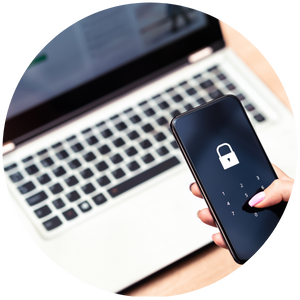In today’s digital age, safeguarding your identity is more crucial than ever. Identity theft has become a prevalent issue, with criminals constantly devising new ways to exploit personal information for financial gain. As a community bank committed to the well-being of our customers, we understand the importance of providing you with practical tips to protect your identity and steps to take if you suspect you’ve fallen victim to identity theft.
What is Identity Theft?
Identity theft occurs when someone wrongfully acquires and uses another person’s personal information, such as social security numbers, bank account details, or credit card information, with the intent to commit fraud or other crimes. The consequences can be severe, ranging from financial loss to damage to your credit score and reputation.
Practical Tips to Safeguard Your Identity
- Regularly Review Your Bank and Credit Card Statements
Embrace the convenience of online banking, mobile banking, and e-statements to keep a watchful eye on your financial transactions. Regularly reviewing your statements allows you to detect any unauthorized or suspicious activities promptly. If you notice any discrepancies, contact your bank - Shred Documents with Personal Information
Physical documents containing personal information can be a goldmine for identity thieves. Shred any documents, such as bank statements, credit card offers, and medical bills, before discarding them. This simple step adds an extra layer of protection against dumpster diving and other physical theft methods. - Review Your Credit Score Annually
Monitoring your credit score is a crucial aspect of identity theft protection. Obtain your credit report from the three major credit bureaus – Equifax, Experian, and TransUnion – at least once a year for free with no effects to your credit score. Checking your credit score regularly helps you identify any suspicious activities or inaccuracies. - Use Strong, Unique Passwords
Strengthen your online defenses by using strong, unique passwords for your accounts. Avoid using easily guessable information like birthdays, addresses or common words. Incorporate a mix of uppercase and lowercase letters, numbers, and symbols. Additionally, consider using a reputable password manager to generate and store complex passwords securely. - Enable Two-Factor Authentication (2FA)
Adding an extra layer of security to your online accounts, such as email, social media, and financial platforms, significantly reduces the risk of unauthorized access. Two-factor authentication requires you to provide a second verification, often through a text message or authentication app, in addition to your password. - Be Cautious with Personal Information Sharing

Exercise caution when sharing personal information, especially online. Avoid providing sensitive details (i.e. social security number, address, birthday) unless necessary and be wary of unsolicited requests for personal information through emails, phone calls, or social media. Verify the legitimacy of requests before responding. Additionally, consider adding your phone number to the Do Not Call Registry to prevent unwanted calls and minimize the risk of falling victim to phone-based scams.
What to Do If You Suspect Identity Theft
If you suspect you’ve been a victim of identity theft, swift action is essential. Follow these steps:
- Visit IdentityTheft.gov
Report the incident and initiate the recovery process by visiting IdentityTheft.gov. This comprehensive resource provided by the Federal Trade Commission (FTC) guides you through the necessary steps to recover from identity theft. - Contact Your Bank and Credit Card Companies
Notify your bank and credit card companies immediately to report the unauthorized activities. They can guide you on how to secure your accounts and may issue new cards or account numbers. - File a Police Report
Report the identity theft to your local law enforcement agency through the non-emergency line. Having a police report can be crucial when dealing with creditors and other entities to dispute fraudulent charges and activities. - Place a Fraud Alert on Your Credit Reports
Contact the three major credit bureaus to place a fraud alert on your credit reports. This adds an extra layer of protection, requiring creditors to verify your identity before opening new accounts in your name. - Monitor Your Accounts Closely
Keep a close eye on your financial accounts for any further suspicious activities. Promptly report any new unauthorized transactions to your bank or credit card company.
Safeguarding your identity is an ongoing process that requires diligence and awareness. By implementing these practical tips and being proactive in monitoring your personal information, you can significantly reduce the risk of falling victim to identity theft. Remember, swift action is key if you suspect any fraudulent activities, and the resources provided by IdentityTheft.gov can guide you through the recovery process. Stay vigilant, and together, we can create a safer digital environment for everyone.






